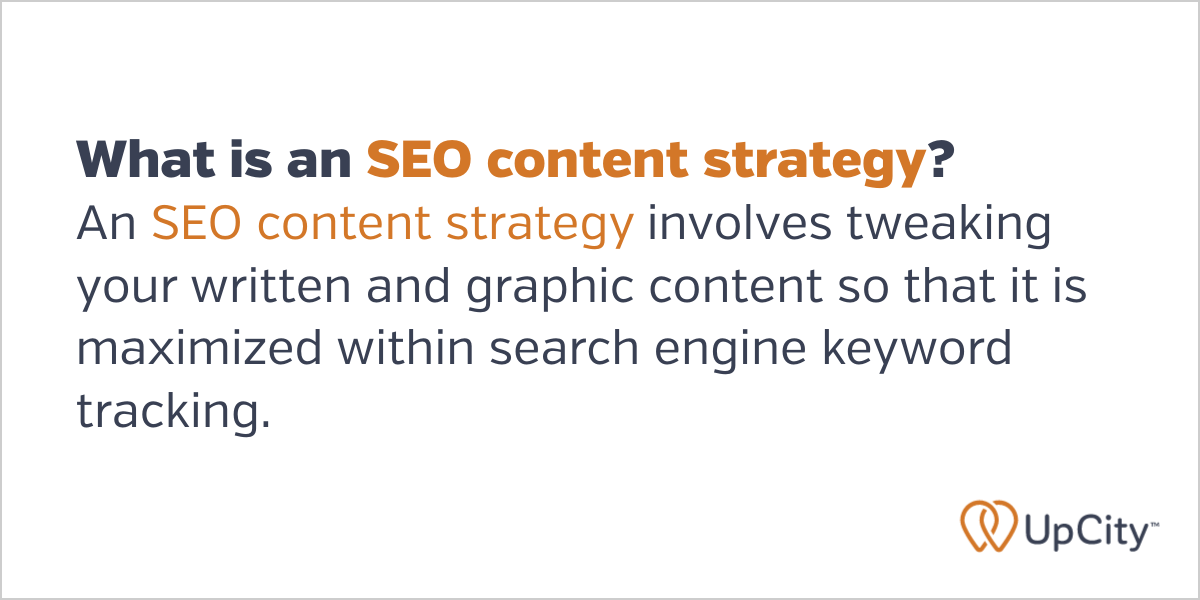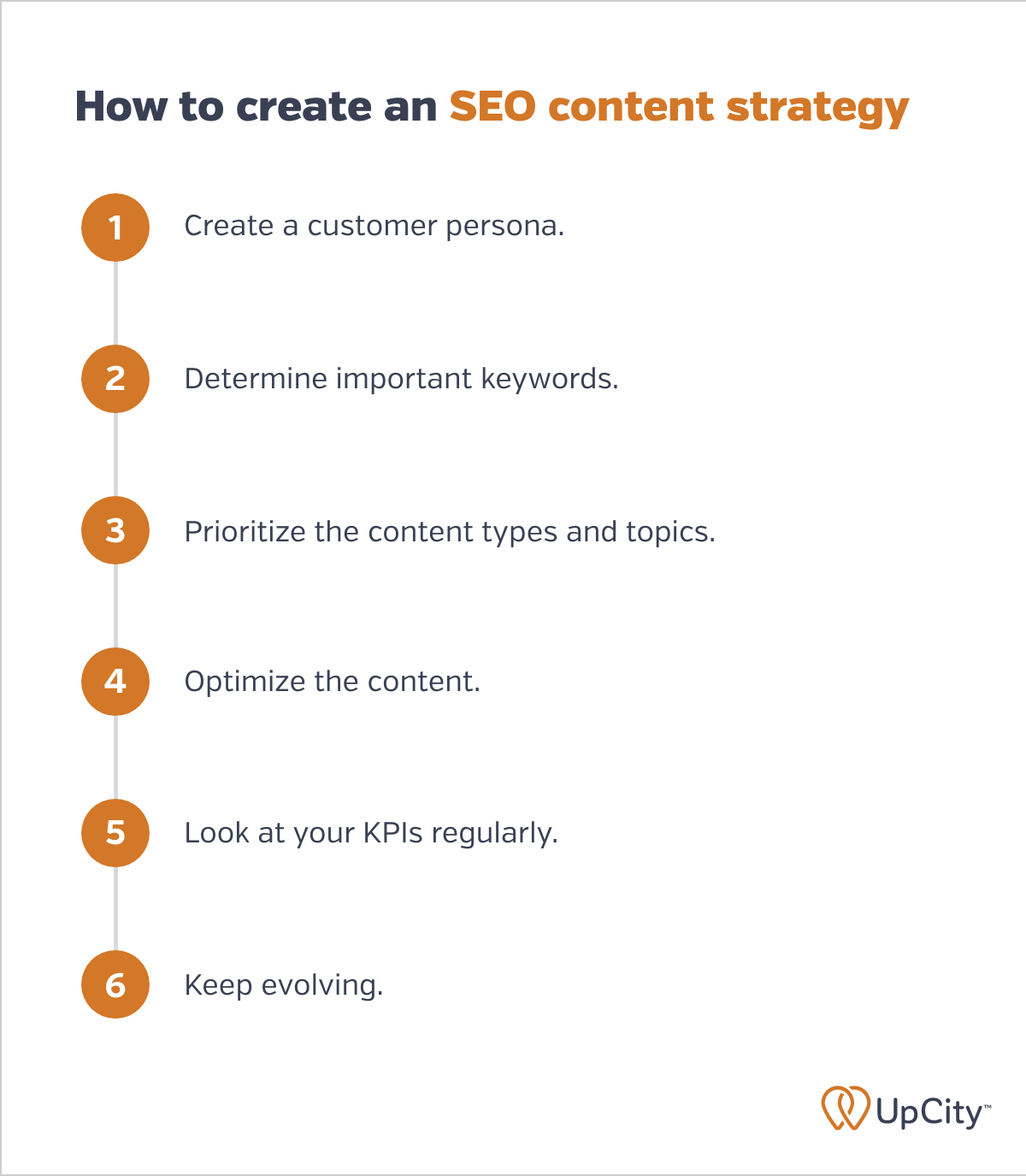You cannot avoid it. Your business needs to have a presence online in order to be present at all. The customer expects it, and frankly, that is how you, as a small business, can find a whole range of new customers out there.
In 2023, 54% of all web traffic was accessed through mobile phones—something that we all likely have in our hands at a given moment in the day. [1] Because a digital presence is so important, SEO strategies have become key to a business ranking on SERPs and their customers finding them. However, blending content and SEO strategy has become increasingly important as businesses want to be relevant and honest to the public.
In this article, we discuss SEO and content strategies separately and why, together, they can take your business presence online to the next level. We also discuss how to devise your own strategy.
What is an SEO content strategy?
SEO and content marketing can be perceived as two entirely different things. Search engine optimization, also known as SEO, is a series of content adjustments on and off your page. These content tweaks rely heavily on keyword research and aim to appeal directly to the Google search algorithm. Content marketing, on the other hand, is a specific marketing strategy focused on creating and sharing written and graphic content.

Now let’s blend them together—tweaking your written and graphic content so that they are maximized within search engine keyword tracking. This means that when you are creating an SEO content strategy, you are looking at web pages, social media posts, videos, blogs, infographics, case studies, newsletters, webinars, and even memes and GIFs to ensure that you are maximizing your SEO and getting a high return.
Why is an SEO content strategy important?
An SEO content strategy melds the technical and creative parts of marketing. Customers rely on SERPs to help them find information and products or services they need. Google, the top search engine, drives 92% traffic to websites and is the most visited website with 85.1 billion visitors. [2] However, if Google cannot appropriately crawl your content for the keywords that your customer is searching for, your customers will not find you. Thankfully, it is not a complete guessing game, there are some best practices to get you started.
To begin, you can certainly have the content and SEO marketing two strategies work in parallel, but as you build an overall marketing strategy, you need to be sure that these two functions are talking to each other and planning appropriately. The SEO team or expert should be talking to the content marketing team to ensure that the blogs they write up are using appropriate keywords, and the content marketing team should be keeping the SEO team abreast of the type of content marketing they may want to focus on.
So, the first step is having the two types of expertise come together to create a strategy. Here are some reasons why you should prepare ahead of time for content strategy for SEO:
1. Keeps you organized
As a small business owner, you probably have a lot going on. You may only have one person who can dedicate themselves to content strategy and SEO while focusing on many other things. Having a strategy in place will keep things organized so they do not feel overwhelming.
2. Aligns with overall marketing strategy
The SEO content marketing strategy is one portion of your overall marketing strategy, which would include branding, advertising, etc. By focusing on your content and SEO, you can be sure that it aligns with your overall marketing and business strategy.
3. Tracks your goals and KPIs
All strategies have markers of success. Your SEO content strategy should be no different. This can include an increase in clicks by a certain percentage, or X number of blog posts per month. However, by having goals, you can ensure your strategy works for you.
How to create an SEO content strategy
So where to start? It may feel like a chicken and egg situation. Do I figure out my keywords first, or figure out what type of content is most important for my audience? Well, let’s take a look at some easy steps to take to get you started:

1. Create a customer persona
As someone who owns a small business, describing your target audience is likely to feel intuitive. However, it is critical to create a customer profile and demographics to better understand who is most likely to buy your product or use your service.
There are several ways of doing this—surveying current customers and asking for demographic and preferential preferences. You could also do competitor analyses and see how they market themselves and who seems to be buying. It is likely that you will do a blend of both strategies.
After this research, you want to create a customer persona—a full-picture view of your customer, someone you feel you can pitch your product or service to. This will help you shape your strategy further.
2. Determine important keywords
Now that you know the persona, it is time to determine what that persona would type into their search bar when looking for your product.
You will need to find the key phrases, specific words, and peripheral words that could lead your persona to your content. During your research, you may be surprised to see which keywords and phrases are more relevant than others.
3. Prioritize the content types and topics
Now it is time to develop a content strategy that aligns with SEO keywords. This part can feel a little overwhelming with the number of types of content you can use. There are several approaches to this:
- Understand your type of business. If your company needs to demonstrate trustworthiness and academic integrity, academic research or case studies will likely be your focus.
- What does your target audience want to see? If your audience is younger, they are likely to want to see GIFs or short videos as part of your content rather than long-form writing. Creating customer-centric content could help you here. [3]
- Do you sell high-level products? Try topic clusters. [4] If your products are constantly evolving (e.g., tech), dedicating topic clustering can help you focus on several different personas at once.
4. Optimize the content
Here are some tried and true things to consider when optimizing the content that you are creating:
- Headers: Your content should have a structure, with a title and headers. Your keywords should be in the title, description, meta title, and headers.
- Body: The content itself should be genuine, unique, and complete. When writing, don’t use the same word multiple times. Find ways to be creative with the keywords so that they boost SEO but do not feel fake.
- Interlinking: The page or content should include interlinks (links within your site) so that they are clicking more within your site for more information. This is a great way to increase search engine optimization in the eyes of Google.
- Review engagement: Look at the click-through rates on your site. Are people landing on your page and hoping off? Are they staying but only for a few seconds? Are they staying but still not buying your product? This will help you determine how to tweak your strategy.
5. Look at your KPIs regularly
If you don’t have key performance indicators helping you, tracking progress will be very difficult and it can feel like you are flailing in the wind. Look at your overall business KPIs and see how your SEO content strategy can align with that. Do you want to double your profit in a year? Then double your KPIs in SEO within a year.
6. Keep evolving
Like most things in business, you cannot stand still. Customer personas change, SERP metrics change and your business is likely to change.
You should be prepared to have annual audits on your SEO content development. This means looking at old blog posts, for example, and ensuring that the keywords in those posts are still relevant. Does the KPI indicate that memes are no longer working on social media? Well, what is? Evolution is not only done on a yearly basis but creating a timeline will help keep you organized and updated so your business does not fall behind.
SEO content marketing best practices
The most important thing to keep in mind is that content SEO strategy is not separate from your business strategy. So, it doesn’t have to feel overwhelming. As a small business owner, you have created something that is your own. You have a business plan and strategies to garner success. Look at that strategy and see how SEO content can fit in. Simplify the process as much as possible so that you are nimble and yet not overtaxed. If you would like some inspiration on an SEO content strategy template and how this can be done for a small legal business, we recommend this read.
Check out UpCity’s SEO provider directory, where you can find a freelancer or a full-stacked digital marketing agency to guide you through this process.

